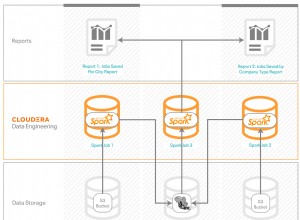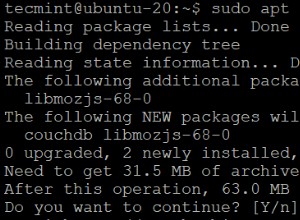Ja, es ist möglich, warum sich auf den Code eines anderen verlassen, wenn Sie Ihre eigene JNDI-Factory erstellen können? Erstellen Sie einfach eine Klasse, die javax.naming.spi.ObjectFactory und eine Bean implementiert, die Mongo aus dem JNDI-Kontext zieht. Ich habe dies für Federdaten konfiguriert -mongo MongoTemplate-Objekt.
public class CustomMongoJNDIFactory implements ObjectFactory {
public Object getObjectInstance(Object obj, Name name, Context nameCtx,
Hashtable<?, ?> environment) throws Exception {
validateProperty(obj, "Invalid JNDI object reference");
MongoTemplate mongoTemplate = null;
String db = null;
String host = null;
String username = null;
String password = null;
int port = 27017;
Reference ref = (Reference) obj;
Enumeration<RefAddr> props = ref.getAll();
while (props.hasMoreElements()) {
RefAddr addr = (RefAddr) props.nextElement();
String propName = addr.getType();
String propValue = (String) addr.getContent();
if (propName.equals("db")) {
db = propValue;
} else if (propName.equals("host")) {
host = propValue;
} else if (propName.equals("username")) {
username = propValue;
} else if (propName.equals("password")) {
password = propValue;
} else if (name.equals("port")) {
try {
port = Integer.parseInt(propValue);
} catch (NumberFormatException e) {
throw new NamingException("Invalid port value " + propValue);
}
}
}
// validate properties
validateProperty(db, "Invalid or empty mongo database name");
validateProperty(host, "Invalid or empty mongo host");
validateProperty(username, "Invalid or empty mongo username");
validateProperty(password, "Invalid or empty mongo password");
//create mongo template
mongoTemplate = new MongoTemplate(new Mongo(host, port), db,
new UserCredentials(username, password));
return mongoTemplate;
}
/**
* Validate internal String properties
*
* @param property
* @param errorMessage
* @throws NamingException
*/
private void validateProperty(String property, String errorMessage)
throws NamingException {
if (property == null || property.trim().equals("")) {
throw new NamingException(errorMessage);
}
}
/**
* Validate internal Object properties
*
* @param property
* @param errorMessage
* @throws NamingException
*/
private void validateProperty(Object property, String errorMessage)
throws NamingException {
if (property == null) {
throw new NamingException(errorMessage);
}
}
}
Frühlingsbohne:
@Configuration
@Qualifier("mongoTemplate")
public class CustomMongoTemplate {
public @Bean MongoTemplate mongoTemplate() throws Exception {
Context initCtx = new InitialContext();
Context envCtx = (Context) initCtx.lookup("java:comp/env");
return (MongoTemplate) envCtx.lookup("bean/MyMongoBean");
}
}
Kontext.xml:
<Resource name="bean/MyMongoBean" auth="Container"
type="org.springframework.data.mongodb.core.MongoTemplate"
factory="com.package.CustomMongoJNDIFactory"
host="" db="" username="" password=""/>
Web.xml
<resource-env-ref>
<description>Mongo JNDI configuration</description>
<resource-env-ref-name>comp/env/bean/MyMongoBean</resource-env-ref-name>
<resource-env-ref-type>org.springframework.data.mongodb.core.MongoTemplate</resource-env-ref-type>
</resource-env-ref>




